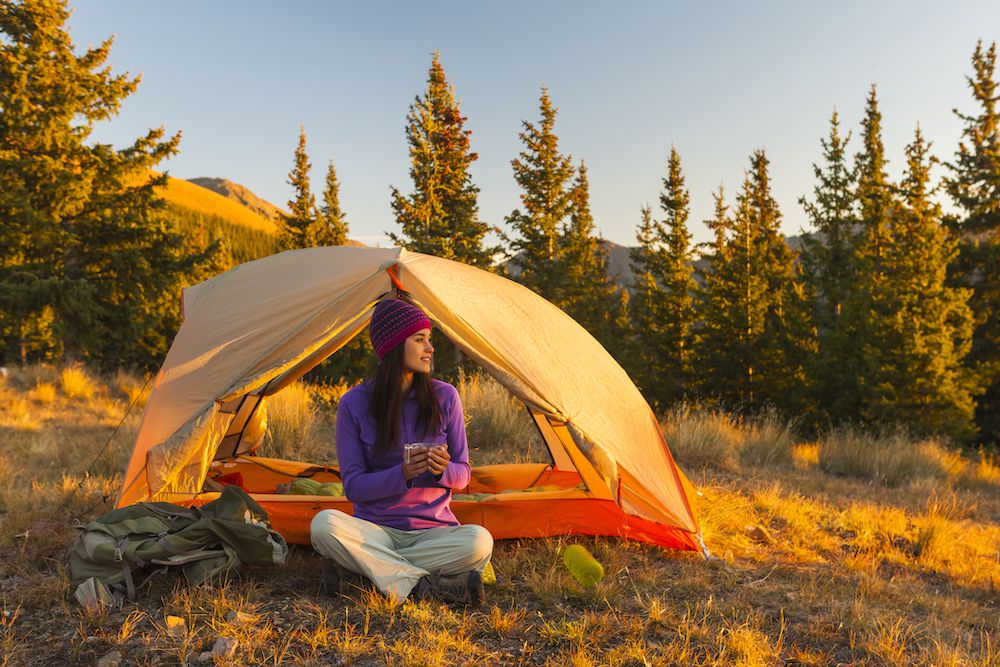Camping season doesn't have to end just because it's September. In truth, camping in the fall may be beautiful, with vibrant colors, less crowds, and good campsites that are difficult to come by during the summer.
Sure, the weather is cooler and the days are shorter, but with a little additional planning, you can have an awesome fall camping adventure beneath the stars. With these fall camping tips, you'll be able to plan ahead and know what to bring so you can enjoy being outside without freezing to death.
Weather Tips:

Perhaps obvious at any time of year, but as the seasons change, checking the weather is especially crucial for an autumn camping tip. Although you're hoping for clear sunny days, knowing what to expect will help you pack appropriately.
Even if rain isn't expected, bring your tent's rainfly as well as an extra tarp or footprint that will fit under your tent. In the fall, the weather can change quickly, and you never know what to expect! The rainfly not only protects you from the elements, but it also adds warmth to your tent at night by minimizing cross breeze.
Apparel Tips:

Temperature swings are common in the fall. The temperature may be in the upper 60s during the day and the low 30s at night. Nothing spoils a camping trip like spending the entire time freezing your buns off.
It's all about layering, layering, layering. Because you'll be vehicle camping and can easily pack a few more items, it's always a good idea to bring a little extra warmth just in case.
How to Stay Warm While Sleeping Tips:

Staying warm at camp is vital for a good night's sleep, so we've compiled a list of fall camping techniques to keep you toasty at night. A warm sleeping bag and sleeping pad, in addition to warm base layers and socks, are important.
To begin, every sleeping bag has a temperature rating, and it's critical that you know what that rating means.
A 30-degree bag, for example, ensures that you will not perish if the temperature drops to 30 degrees. If it's 30 degrees outside, it doesn't guarantee you'll be lovely and toasty. A 30-degree bag on a 30-degree night will be a long and chilly night. If you get cold quickly and are going camping in 30-degree temperatures, a 0 or 10-degree bag would be more appropriate.
Before you head out on your fall camping trip, double-check your sleeping bag's temperature rating (it's generally posted somewhere on the bag) to be sure it's adequate for the weather prediction. Another option is to bring additional blankets from home or to line your sleeping bag with a sleeping bag liner.
The insulation value of your sleeping pad is another phrase you should be familiar with. Most sleeping pads use an R-value to determine this, and a higher figure (3.5+) means better insulation from the ground. If your sleeping pad has a low R-value, a foam sleeping pad underneath your inflatable sleeping pad should suffice.
Filling a hot water bottle with hot water is another excellent camping technique for staying warm. Bring it to bed with you and tuck it up in your sleeping bag.
Finding Places To Camp In the Fall Tips:

If you're intending on staying in a well-known campground, be sure it's still open. Many campgrounds lock their doors for the winter in late September or early October. Similarly, if you're seeking for dispersed camping along Forest Service roads, you'll find it there. You don't want to travel off the grid and lose cell phone service only to discover that the campsite you planned to use is no longer available.
New to camping? Want to stay safe? Check out our Beginner's Guide to Surviving While Camping & Preparing For Emergencies While Camping!

